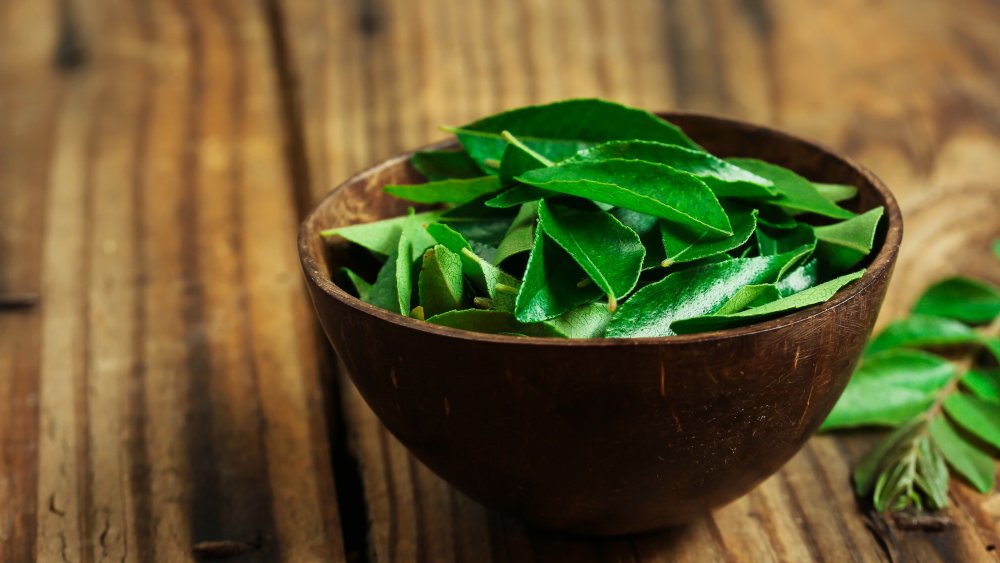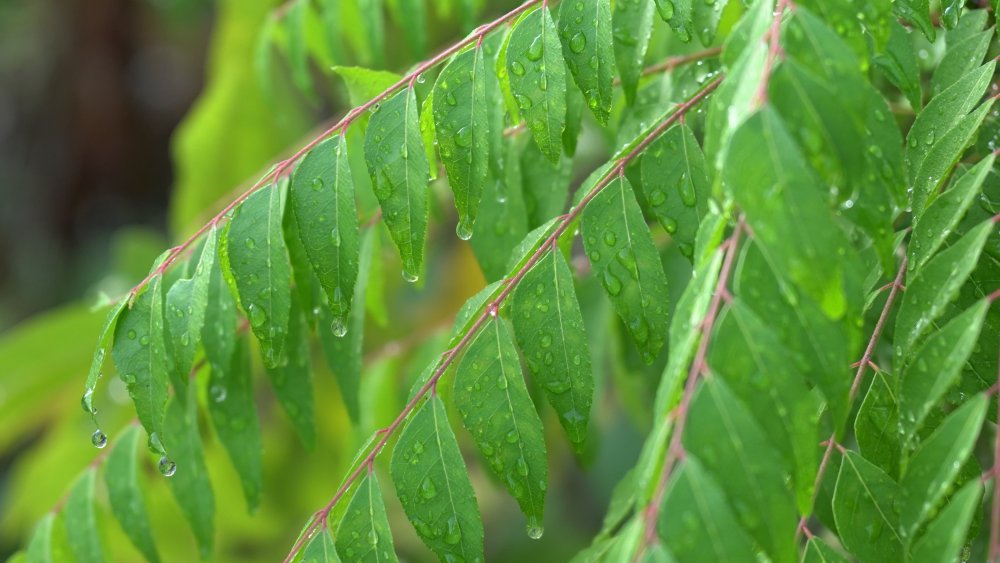What Happens If You Eat Curry Leaves Every Day?
Curry leaves have played a big part in traditional Indian medicine, or Ayurveda, for the last 3,000 years because of their antibacterial and inflammatory properties (via Masterclass). They are considered an effective tool to manage health problems such as indigestion, diabetes, and high cholesterol. They are a good source of iron, which can help with anemia, and are considered to be a rich source of vitamins A, C, B and E (via Times of India).
They may be called "curry leaves," but the green, flavorful herb isn't curry in the way you might think it is. Masterclass says the green, teardrop-shaped leaves come from the curry tree, which is actually part of the citrus family. They are lemon-scented and taste like anise and lemongrass. While they first came from Sri Lanka and Southern India, curry leaves, which are also called sweet neem leaves or kadi patta, are mostly used in South Indian cooking today. And no, they aren't related to curry powder either, which is a spice mix made with coriander, cumin, turmeric, and cayenne, and which the British invented so they could perk up Indian dishes.
Curry leaves can help you lose weight
The herb's ability to help the body detoxify means it can be used as a weight-loss aid. Times Now suggests that the best way to prepare and consume curry leaves is by using it as a spice in dishes, by chewing it raw (while it is fresh, not dried), or preparing it in a tea.
This means taking 30 to 40 curry leaves, adding hot water and then straining the tea after a few minutes. Honey and lemon juice can be added to improve the flavor before it is consumed. If you want to chew them raw, the site suggests eating 10 to 15 raw curry leaves every morning and drinking warm water after that.

